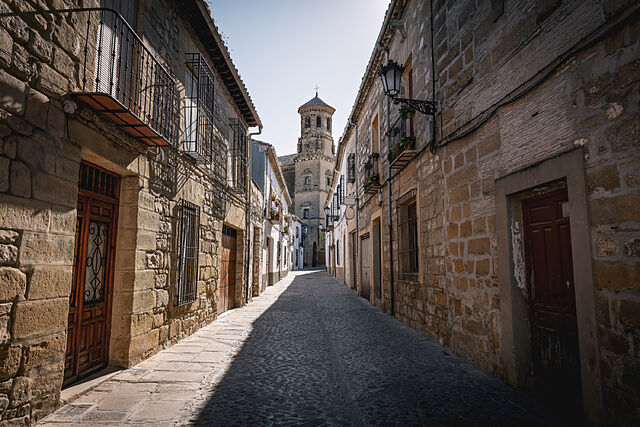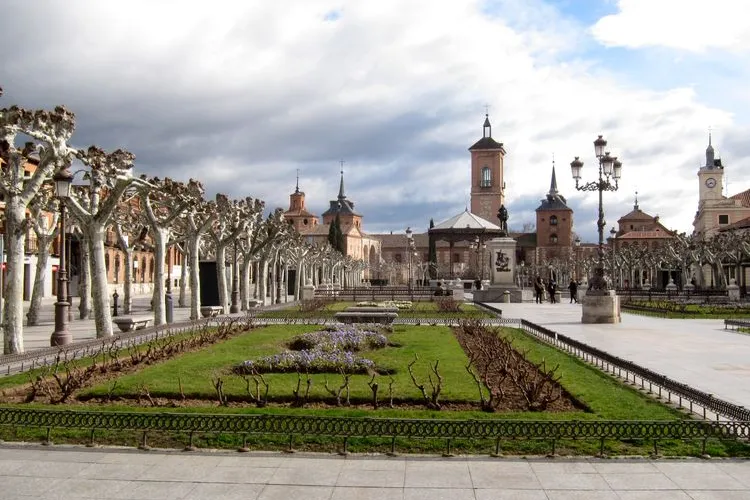Spain has witnessed a remarkable transformation in its tourism habits. Travelers are no longer solely drawn to iconic cities like Madrid, Barcelona, or Seville. Instead, there’s a growing appetite for destinations that offer authenticity, cultural richness, and a deep connection to tradition. This shift in preference reflects a global trend toward more meaningful, immersive experiences that allow tourists to engage with local history, cuisine, and landscapes far from the well-trodden tourist paths.
By 2025, this tendency has fully taken root. According to data from the free walking tour platform GuruWalk, more and more Spanish travelers are gravitating toward lesser-known towns and small cities with compelling stories, rich cultural heritage, and gastronomic treasures. These destinations, though often overshadowed by their larger counterparts, are now emerging as hotspots for those seeking a more genuine slice of Spain. Let’s explore ten of these standout locations.
Úbeda (Jaén): Renaissance Elegance Preserved
Declared a UNESCO World Heritage Site, Úbeda is often described as an open-air museum of Spanish Renaissance architecture. Its cobblestone streets are framed by majestic palaces, churches, and noble houses, including highlights like the Sacred Chapel of El Salvador and the Palace of the Chains. At the heart of the city lies the Plaza Vázquez de Molina, regarded as one of the most beautiful squares in Spain.
Visitors to Úbeda also have the chance to explore traditional pottery workshops that preserve centuries-old techniques. Culinary enthusiasts are drawn here for the town’s exquisite virgin olive oil, a staple of local cuisine. For those interested in delving deeper into history, the Interpretation Center of the Renaissance offers fascinating insights into the city’s artistic and cultural legacy.
Baeza (Jaén): Medieval Ambiance and Literary Legacy}

Baeza, Úbeda’s neighboring town and fellow World Heritage Site, is equally captivating. With its serene medieval atmosphere and well-preserved historic center, Baeza transports visitors to another era. One of the town’s most significant monuments is the Cathedral of Baeza, among Spain’s earliest Renaissance churches. The old University, where poet Antonio Machado once taught, adds a poetic touch to the town’s heritage.
Gastronomy in Baeza is another highlight. Local specialties like the ochío—a savory pastry flavored with paprika and filled with chorizo or other delicacies—make it a delightful destination for food lovers. A walk along the Paseo de las Murallas provides sweeping views of the Guadalquivir Valley, perfect for photography and peaceful contemplation.
Alcalá de Henares (Madrid): The Birthplace of Cervantes

Alcalá de Henares holds a special place in Spain’s cultural landscape as the birthplace of Miguel de Cervantes, author of Don Quixote. A tour through its historical center reveals gems such as the Corral de Comedias (one of Europe’s oldest theaters), the Cervantes Birthplace Museum, and the grand façade of the University of Alcalá.
The city is also known for its annual Cervantine Market, one of Spain’s largest medieval festivals. Local sweets, particularly the rosquillas de Alcalá, delight the palate, while bookshops and taverns scattered across its pedestrian streets offer a haven for history and literature lovers alike.
Gijón (Asturias): Coastal Charm and Cultural Vitality
Nestled on the northern coast, Gijón is a vibrant seaside city that seamlessly combines maritime traditions with contemporary culture. The historic Cimavilla neighborhood, once a fishing village, is now a lively area with restaurants, bars, and artisan shops. The city’s beaches—particularly San Lorenzo—are perfect for sunbathing or water sports.
Gijón’s green surroundings are ideal for nature walks. Trails like the Piles River Path and the La Camocha Greenway provide scenic routes without leaving the city. Among its cultural landmarks, the Labor University stands out as the largest building in Spain, while the Atlantic Botanical Garden hosts plant species from across the globe.
Ronda (Málaga): A Dramatic Landscape and Rich History
Perched dramatically above a deep gorge, Ronda offers some of the most breathtaking views in Andalusia. The iconic New Bridge (Puente Nuevo) spans the Tajo Gorge, connecting the city’s two halves. Ronda’s historic bullring is one of the oldest in Spain and reflects the town’s deep-rooted bullfighting tradition.
Beyond its dramatic setting, Ronda offers rich culinary experiences. Dishes like sopa rondeña (a hearty soup) and rabo de toro (oxtail stew) reflect the area’s rustic flavors. Highlights include the well-preserved Arab baths and the Mondragón Palace, once the residence of Muslim kings. Adventurers can also explore the nearby Caminito del Rey trail, famed for its dizzying walkways.
Albarracín (Teruel): A Fairytale Fortress Town
Albarracín is often cited as one of the most beautiful villages in Spain. Nestled in the mountains of Teruel, its reddish houses, narrow alleys, and ancient walls create a picture-perfect medieval townscape. The surrounding landscape includes rivers, waterfalls, and forests, offering ample opportunities for hiking and photography.
Points of interest include the Cathedral of El Salvador and the Diocesan Museum, which showcases sacred art and historical artifacts. The nearby Calomarde and San Pedro waterfalls enhance Albarracín’s allure, making it a top destination for nature and history lovers alike.
Plasencia (Cáceres): Jewel of the Jerte Valley
Known as “the pearl of the Jerte,” Plasencia boasts a wealth of architectural treasures. Renaissance palaces, centuries-old convents, and the remarkable New and Old Cathedrals speak to the town’s rich past. Its compact historic center is perfect for strolling and discovering hidden corners.
Just outside Plasencia lies the Monfragüe National Park, a haven for birdwatchers and one of Europe’s best spots to observe vultures and eagles in their natural habitat. Plasencia’s blend of culture and proximity to nature makes it a well-rounded destination for all kinds of travelers.
Jerez de la Frontera (Cádiz): Flamenco, Horses, and Sherry
In the heart of Andalusia, Jerez de la Frontera embodies tradition and elegance. Famed for its flamenco music and the world-renowned sherry wine, Jerez offers visitors a sensory journey through Andalusian culture. Touring one of its historic bodegas (wineries) is a must, as is attending a performance at a local peña flamenca.
Equestrian arts take center stage at the Royal Andalusian School of Equestrian Art, while architectural highlights include the Jerez Cathedral and the 11th-century Alcázar, a Moorish fortress that dominates the skyline. Jerez is a feast for the senses, offering vibrant performances, historic venues, and unforgettable flavors.
Aranjuez (Madrid): Royal Grandeur by the River
Aranjuez has long been associated with Spanish royalty, serving as a spring retreat for kings and queens. Its Royal Palace, with sumptuous interiors and expansive gardens, reflects centuries of regal splendor. The entire site has been designated a Cultural Landscape World Heritage Site by UNESCO.
Highlights include the Casa del Labrador and the historic Tren de la Fresa (Strawberry Train), which runs between Madrid and Aranjuez and recreates a 19th-century travel experience complete with tastings and period costumes. The town’s tree-lined avenues and elegant architecture make it a perfect escape from the hustle and bustle of the capital.
Vigo (Pontevedra): The Galician Gateway to the Sea
Vigo, the largest city in Galicia, strikes a balance between urban sophistication and natural beauty. Its old quarter (Casco Vello) is filled with charming plazas, seafood taverns, and artisan shops. Vigo’s fish market is one of the busiest in Europe, offering fresh catches that delight food lovers.
A major draw is the Cíes Islands, part of the Atlantic Islands of Galicia National Park, which can be reached by ferry from Vigo. These islands boast some of the best beaches in Europe, including the famous Rodas Beach. Back in the city, the hilltop Castro Fortress offers panoramic views of the Ría de Vigo and surrounding coastline.
A New Era of Tourism in Spain
What these destinations have in common is their ability to offer something increasingly sought after in today’s tourism landscape: authenticity. As travel in 2025 moves away from overcrowded attractions, towns like Úbeda, Albarracín, and Jerez de la Frontera are proving that the soul of Spain resides in its lesser-known corners. With their deep-rooted histories, culinary delights, and architectural treasures, these cities and towns are more than worthy alternatives to the usual tourist hubs.
Platforms like GuruWalk, which connect travelers with local guides for free walking tours, are playing a crucial role in supporting this trend. They enable visitors to explore new places with the guidance of passionate locals who share personal stories, cultural insights, and historical context.
As Spain continues to reinvent its tourism identity, one thing is clear: the most memorable experiences often lie just beyond the well-worn path. Whether you’re a history buff, a foodie, a nature lover, or simply curious about Spain’s hidden gems, 2025 is the perfect year to discover a new side of this richly diverse country.
